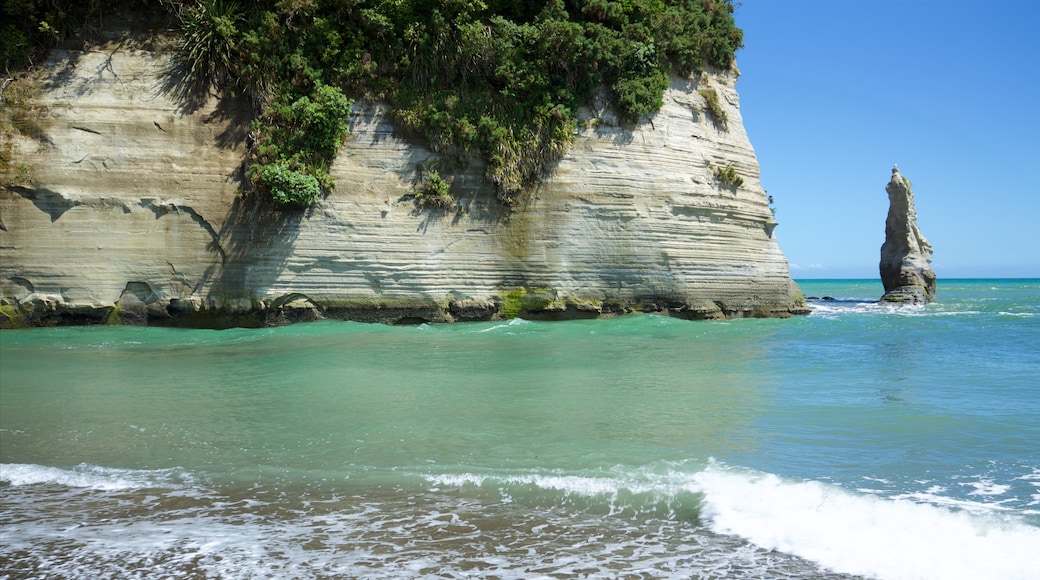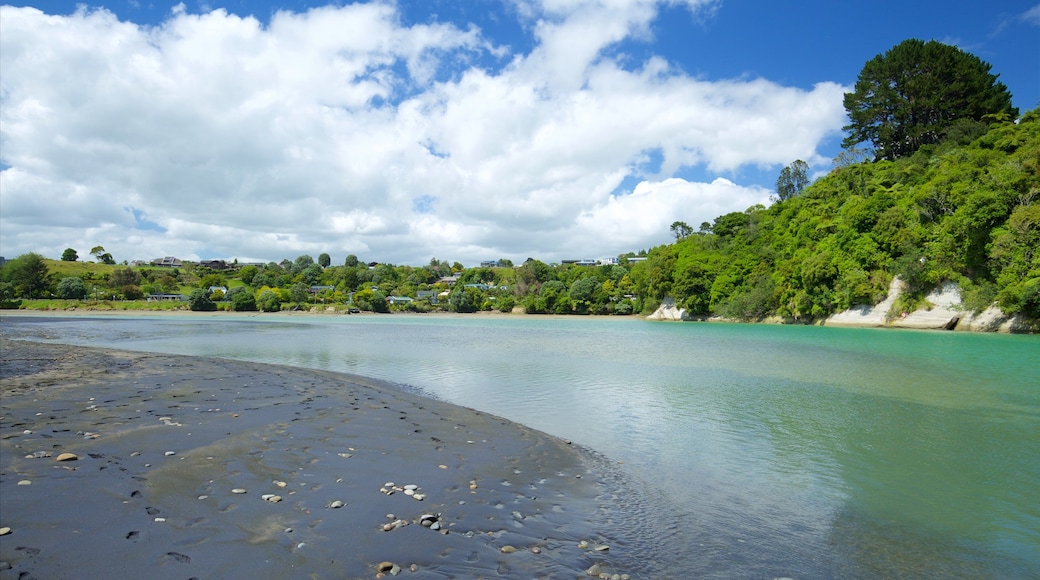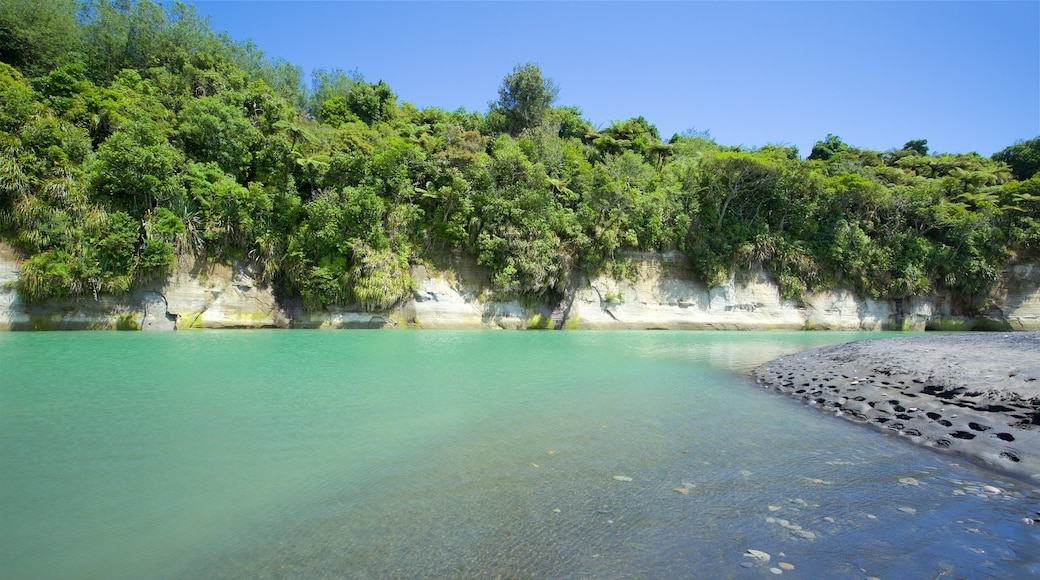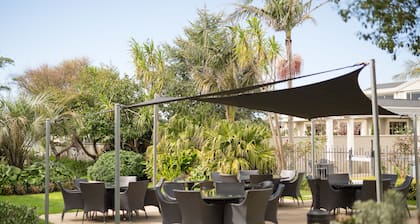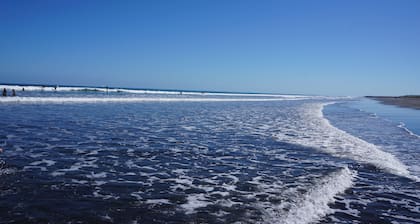Tucked in between the hills and the coast, Urenui in northern Taranaki has its own microclimate as well as a unique social climate, with friendly locals who love a bit of fun.
The Urenui River flows past this sleepy settlement to spill into the North Taranaki Bight, home to the Tapuae Marine Reserve. Stroll along the black sands of Urenui Beach to admire the towering cliffs, at the mercy of the tides and coastal winds.
Just to the east is the Urenui Marae, the last of the community grounds of the Ngāti Mutunga. This Māori “iwi” (tribe) has its origins in Taranaki, but was chased off during the Musket Wars. Today, special iwi events andrituals again take place in the ancestral houses of Mahi Tamariki, Te Aroha and Te Titohea.
While in town, admire the statue of Sir Peter Buck, also known as Te Rangi Hīroa. Buck was a descendant from the Ngāti Mutunga iwi, although his paternal ancestry was British and Irish. Buck not only was the national long-jump champion in 1900 and 1903, he was also a military doctor, a politician, an ethnologist, and eventually the director of Bishop Museum in Honolulu, Hawaii. Visit the Ōkoki pā historic reserve to pay your respects to this local legend at his final resting place.
Because Urenui is only small, the coastal settlement depends on the creativity of its multicultural locals to get noticed. Some examples of how they keep Urenui on the tourist radar include the Urenui Rodeo, a speed-shearing competition in the local pub and the Naki Run Amuck, a fun run with muddy contestants.
For an epic bike trip, ride uphill to the summit of Kaka Road at Okoki, then through the hand-dug Uruti Road Tunnel and loop back to the highway to return to Urenui. Along the way, enjoy some great views of Taranaki hinterland with its forested valleys.
Urenui is located just north of New Plymouth along State Highway 3, making it a perfect daytrip. Ure means “courage” and nui is “great,” but you don’t to need to be a brave adventurer to discover the hidden treasures of this quiet rural town.

